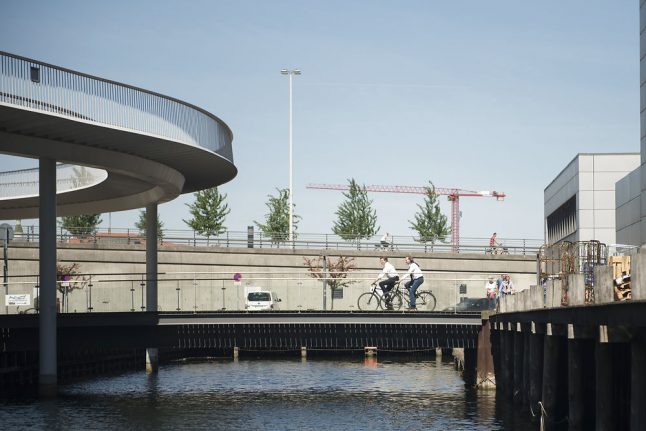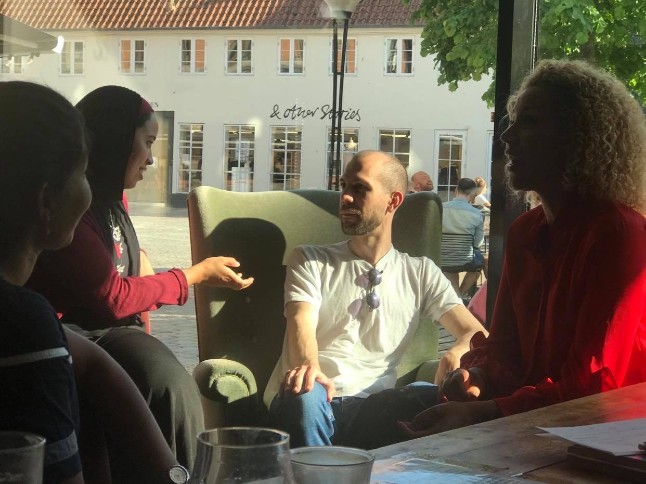There are 8,998 Americans currently living in Denmark's 99 different municipalities.
Of those, 3,569 live in Copenhagen, with the next-most populous municipality for Americans being Aarhus, with 639. That means over five times more American residents live in Copenhagen than in any other municipality — similar to figures for British citizens living in Denmark.
READ ALSO: Map: Where do Denmark-based Brits live, and how many have become Danish citizens?
Frederiksberg is next with 495, then Gentofte with 358. Both Frederiksberg and Gentofte are a part of the greater Copenhagen area.
The other municipalities with over 100 American residents are: Odense with 213, Aalborg with 159, followed very closely by Lyngby-Taarbæk with 158, Rudersdal (154), Gladsaxe (128), Vejle (124), and Roskilde (101).
!function(){“use strict”;window.addEventListener(“message”,function(a){if(void 0!==a.data[“datawrapper-height”])for(var t in a.data[“datawrapper-height”]){var e=document.getElementById(“datawrapper-chart-“+t);e&&(e.style.height=a.data[“datawrapper-height”][t]+”px”)}})}();
The island of Læsø is the municipality with the fewest number of both British and American citizens, with only one American, and three Britons.
The number of American citizens living in Denmark has increased from 6,494 in 2008 to 9,351 in 2018. There were 9,351 Americans living in Denmark 1st January 2018, and of these 1,091 of these had Danish citizenship, according to Statistics Denmark figures.
American immigration to Denmark and visits by American tourists to Denmark have both increased over the last 10 years, according to the national stats agency.
!function(){“use strict”;window.addEventListener(“message”,function(a){if(void 0!==a.data[“datawrapper-height”])for(var t in a.data[“datawrapper-height”]){var e=document.getElementById(“datawrapper-chart-“+t);e&&(e.style.height=a.data[“datawrapper-height”][t]+”px”)}})}();
Employment of Americans living in Denmark
Americans living in Denmark have 36 different occupations, according to Statistics Denmark's classifications. The most common sectors are education, wholesale and retail trade, consultancy, IT and information service activities, residential care, arts, entertainment and recreation activities, accommodation and food services, travel agents, cleaning and other operational services, healthcare, advertising and other business services.
Americans who have become Danish citizens
“There are 9,338 Americans in Denmark, but the number of American citizens is 8,998,” journalist Theis Stenholt Engmann of Statistics Denmark told The Local.
“There are also 729 descendants of American immigrants in Denmark, 406 of these have American citizenship.” Engmann added.
A graph showing Danish citizenships awarded to Americans over time reveals an interesting trend which mirrors that highlighted in our article on the numbers of Britons who have moved to Denmark.
In 2008, 25 Americans became Danish citizens. The following year, the number dropped to 19, and remained at a low level until reaching 27 new citizenships 2015.
In 2016, the number of Americans granted Danish citizenship increased to 110, before more than doubling to 248 in 2017. Last year, 114 US nationals became Danish citizens.
!function(){“use strict”;window.addEventListener(“message”,function(a){if(void 0!==a.data[“datawrapper-height”])for(var t in a.data[“datawrapper-height”]){var e=document.getElementById(“datawrapper-chart-“+t);e&&(e.style.height=a.data[“datawrapper-height”][t]+”px”)}})}();
That is almost certainly linked to Denmark's introduction in 2015 of a law allowing dual citizenship. Many who may have long-since fulfilled requirements to become nationalised in Denmark, but did not want to give up their US passport, may have waited until 2015 to begin applying.
READ ALSO: Why provincial Denmark is a great place to be for an international family




 Please whitelist us to continue reading.
Please whitelist us to continue reading.
Retired USMC, Marine Guard with our Embassy 1950’s.
My wife, Bente, and I married 63 years ago. Are there other Marines that married while stationed Copenhagen? After military retirement Bente and I moved to Copenhagen for more than 10 years. Would like to contact others who may have done the same.